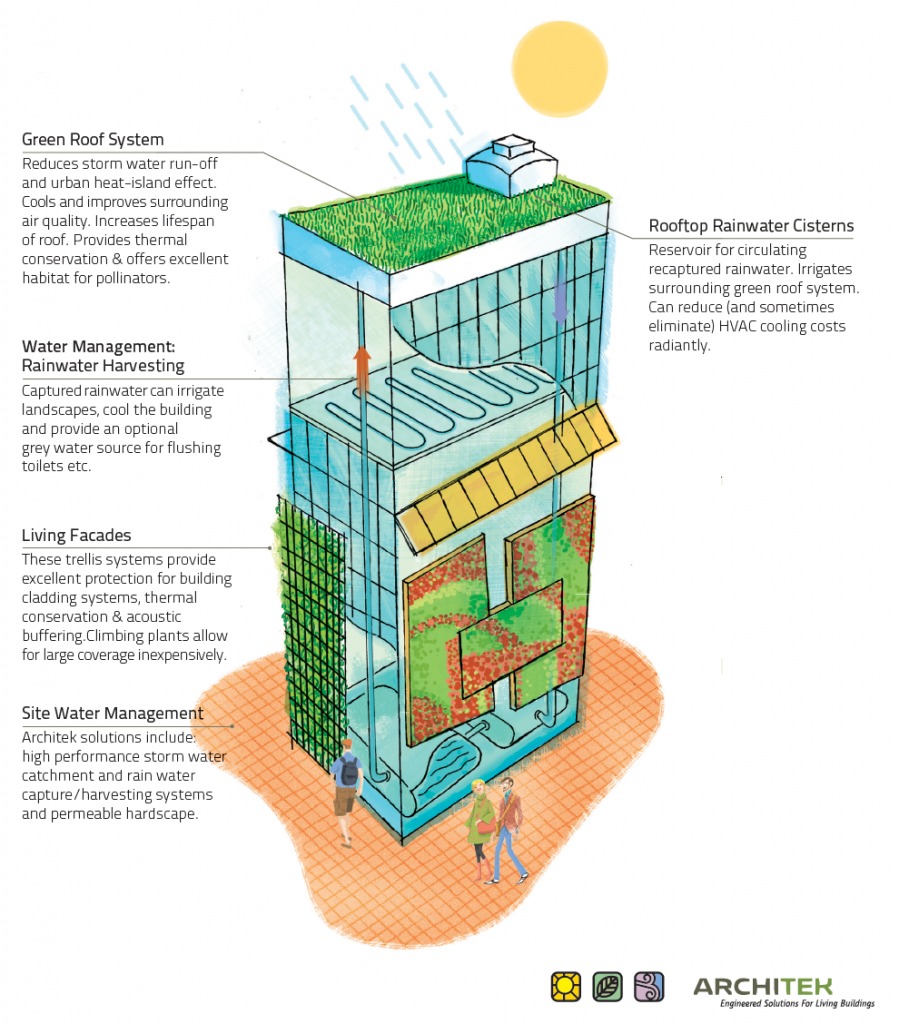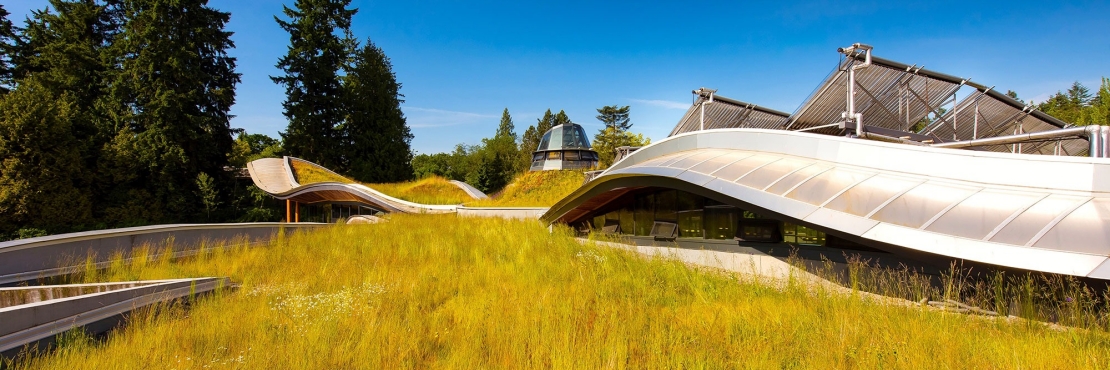Ronald P. Schwenger, Principal Architek SBP Inc. and Steve Williams, Environmental Manager ABT Inc. of Canadian Architect writes:
With climate change on everyone’s mind these days, progressive, forward-thinking municipal planners and bylaw writers have started looking much closer at water management at the project site level rather than just focusing on an infrastructure approach to urban water management. Increased flash floods in north American cities, coupled by longer periods of drought in summer months, has made managing seasonal water a priority. Fortunately, there are excellent options using innovative new technologies that will make site water management easier to design and implement. This article will highlight some of the new approaches that architects, and builders can utilize to meet the more stringent site water bylaws.
Integrated Approach Provides the Best Results
Applying an integrated approach to site water management will always bring the best results. Combining traditional and blue-green green roofs with high performance stormwater catchment systems, rainwater harvesting, permeable hardscapes and smart controls, we can use water very productively for the building and the site.

Sustainable Benefits and Long Term Pay-offs
Site water management provides for many long-term benefits when it comes to sustainable development. Firstly, every time municipal crews dig up existing stormwater infrastructure for expansion or repair, it is not only costly from an economic perspective, there is a significant carbon footprint to this activity. With that said, reducing stormwater system infrastructure remediation, repair and replacement due to increasing demand has a positive impact on our urban environment.
Additionally, by reducing water use at the site level for landscape irrigation and reusing site retained stormwater during wet seasons through traditional or passive irrigation we are not only managing stormwater we are conserving water during drier seasons. When we utilize the available new smart technologies for managing water at the site, we dramatically reduce the environmental footprint and save city taxpayers millions of dollars of infrastructure expenditures.
Changing the Nature of Stormwater Management is unquestionably the natural choice moving forward.
 Greenroofs.comConnecting the Planet + Living Architecture
Greenroofs.comConnecting the Planet + Living Architecture





